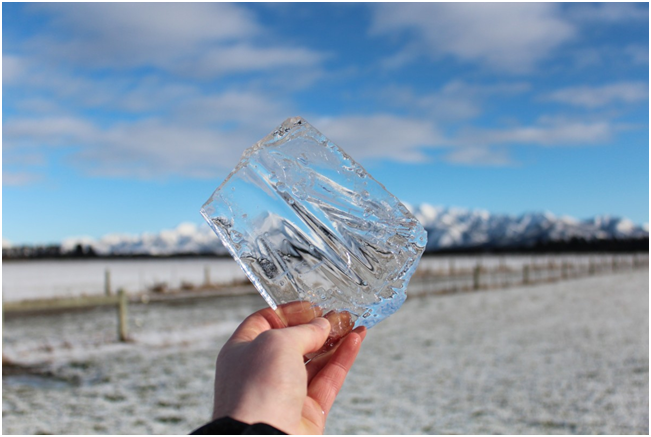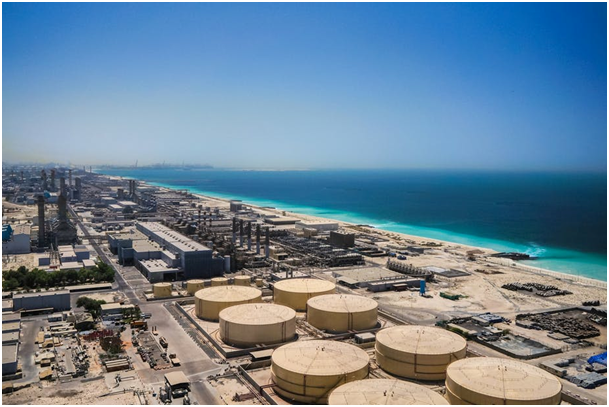
Charles Goulding Jr. dives into 3D printing used for thermal desalination applications.
Record Heat Everywhere
This summer, thermometers in Saudi Arabia hit 127 degrees F. Year-round, the average temperature regularly exceeds 115 degrees F. By 2100, Saudi Arabia’s heat index — a measure of heat and humidity — could reach as high as 165F.
Elsewhere, the story is similar. Throughout the past decade, the southwestern United States has experienced its worst heat spells and droughts in recorded history. Indeed, over 80% of the entire country was at least abnormally dry during the 2012 drought, with Texas recording its driest month ever the year before.
(Lack of) Waterworld
For regions across the world, freshwater availability is a major concern. Water scarcity — the difficulty in obtaining fresh water for a set period of time — affects almost 3 billion people annually. A sizable subset of 1.2 billion people lacks access to clean drinking water.
Worse, problems with water are predicted to increase drastically. By 2050, six billion people will likely experience water scarcity.
Desalination: A Necessary Solution
Since saltwater accounts for 97.5% of all water on earth, a cost-effective, scalable treatment method would have profound implications for water scarcity. Because of its especially dire heat challenges, Saudi Arabia leads the world in water desalination, a process that removes salt and other impurities to produce water for drinking and other purposes.
Already, Saudi Arabia produces 600 million gallons per day through desalination, equaling 17% of global output — a sizable amount, but not nearly enough given present and upcoming circumstances.

A New Day for Thermal Desalination and 3D Printing
Because of its vast, cheap fossil fuel resources, Saudi Arabia uses significant amounts of thermal desalination. Typically in thermal desalination, heat separates water from salt and impurities. Yet this energy-intensive process emits a great deal of carbon dioxide — the very culprit for the world’s exacerbating water problems.
Thermal desalination’s shortcomings have made GE’s recent breakthrough especially valuable. The firm 3D printed a miniature version of a steam turbine and used the device to propel seawater through a cooling loop. The salt freezes, leaving icy drinking water behind.
As explained by GE’s Douglas Hofer, “[f]reezing seawater to treat it is nothing new, but the way we are doing it is very different. We’re tapping into our wealth of technical knowledge in turbomachinery to devise a cost-effective solution.”
Not only does GE’s solution lower the cost of turbine production, but it also makes desalination eight times more efficient than conventional, heat-based methods. Said Hofer, “[c]ooling the salty water, or brine droplets, by expanding cold gas in the turbine would greatly reduce the energy required for desalination.” Consequently, the firm believes it can lower the cost of desalination by as much as 20%.
More Innovation Needed
Already, 3D printing has made contributions to both major desalination methods, thermal and membrane. In membrane desalination, saltwater passes through a membrane that filters out salt, allowing purified water to pass through microscopic pores. Due to the complex geometries involved, the method has been an ideal candidate for 3D printing.
A recent study of ice-based thermal desalination also involved tinkering with the geometries involved. Scientists in Mexico, another country facing major heat challenges, noted that changes to container length materially affected desalination efficiency.
Customizing container sizes to different thermal systems may be the next frontier in 3D printing for desalination. Whatever the innovation, the reward for disruption is huge given presently high costs, particularly at heat-based thermal plants.
The Research & Development Tax Credit
3D printing firms innovating in technologies that touch on desalination can avail themselves of the federal R&D tax credit to help subsidize their research efforts.
Enacted in 1981, the now permanent Federal Research and Development (R&D) Tax Credit allows a credit that typically ranges from 4%-7% of eligible spending for new and improved products and processes. Qualified research must meet the following four criteria:
- Must be technological in nature
- Must be a component of the taxpayer’s business
- Must represent R&D in the experimental sense and generally includes all such costs related to the development or improvement of a product or process
- Must eliminate uncertainty through a process of experimentation that considers one or more alternatives
Eligible costs include U.S. employee wages, cost of supplies consumed in the R&D process, cost of pre-production testing, U.S. contract research expenses, and certain costs associated with developing a patent.
On December 18, 2015, President Obama signed the PATH Act, making the R&D Tax Credit permanent. Beginning in 2016, the R&D credit can be used to offset Alternative Minimum Tax for companies with revenue below $50MM and for the first time, pre-profitable and pre-revenue startup businesses can obtain up to $250,000 per year in payroll tax cash rebates.
Conclusion
Whether for membrane or thermal desalination, 3D printing must continue to be a major contributor to water solutions. Drought has already made water a profound challenge on every continent. Going forward, extreme heat from climate change will exacerbate water scarcity drastically, as will widespread flooding.
If these challenges are to be addressed, 3D printing innovations that have yet to be studied or speculated upon may prove to be the most consequential.
